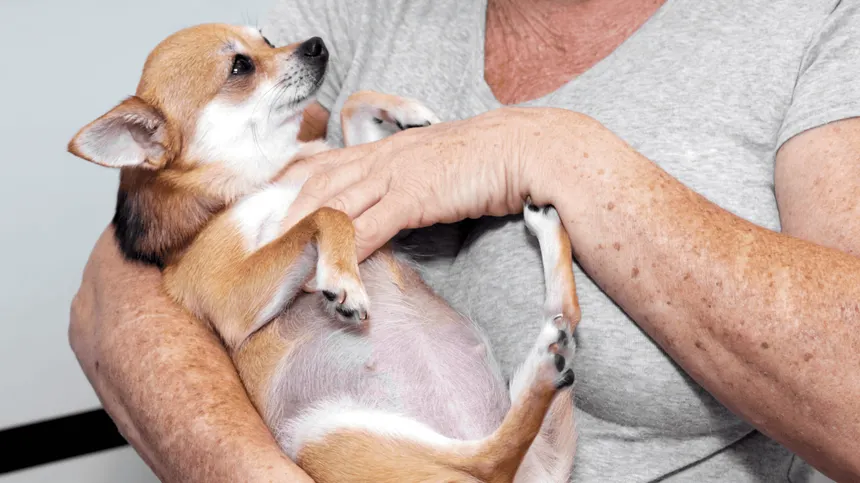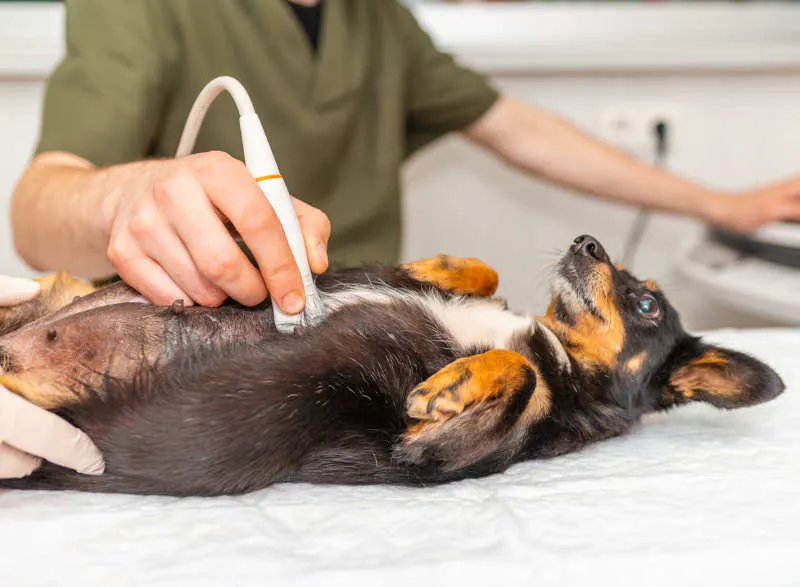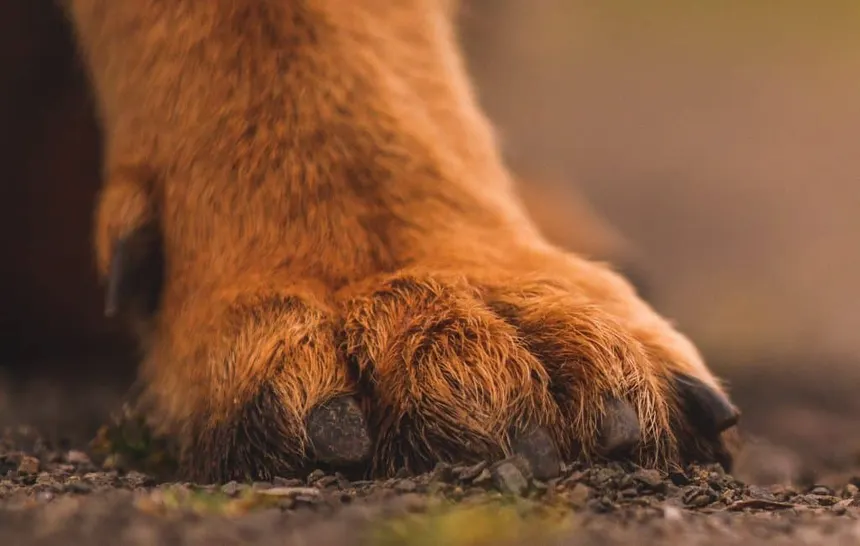Yes, it is generally safe to groom a pregnant dog, but it must be done with extra care, gentleness, and attention to the dog’s comfort and stress levels. Always avoid putting pressure on the abdomen and consult a vet or experienced groomer if unsure.
Understanding Dog Pregnancy and Grooming Needs

Dog pregnancy lasts approximately 63 days and brings significant hormonal, physical, and behavioral changes.
These changes affect grooming in the following ways:
- Hormonal shifts can cause irritability or fatigue
- Physical changes like a growing abdomen, enlarged mammary glands, and sensitive skin impact comfort
- Behavioral changes might make a usually calm dog anxious or uncooperative
- Shedding and coat texture often shift as hormones rise, increasing the need for coat maintenance
Why Grooming Is Important During Pregnancy
- Prevents matting which can trap bacteria
- Keeps mammary area and whelping zone clean
- Helps monitor skin issues or swelling early
- Reduces stress and discomfort if done properly
Regular, gentle grooming helps pregnant dogs feel more comfortable and keeps their coat and skin healthy in preparation for labor.
Is Grooming Safe for Pregnant Dogs? Expert Insights
Yes, but not all grooming is created equal. Safe grooming for expecting dogs hinges on:
- Gentle techniques
- Timing based on pregnancy stage
- Dog’s temperament and stress level
- Vet approval when complications exist
What Vets and Groomers Say
- Most vets agree light grooming is safe during all three trimesters
- Grooming should be adapted as the pregnancy progresses
- Avoid high-stress environments like loud grooming salons
Breed-Specific Grooming Concerns
Some breeds need more attention due to their coat type:
- Long-haired breeds (e.g., Golden Retrievers) may mat easily
- Double-coated breeds (e.g., Huskies) shed more
- Toy breeds may be more prone to stress
Adapt tools and routines to the breed and stage of pregnancy.
When to Avoid Grooming a Pregnant Dog

There are moments when grooming should be skipped entirely:
High-Risk Pregnancy Stages
- Final week before whelping
- If the dog shows signs of early labor or discomfort
- When under veterinary treatment for pregnancy complications
Warning Signs to Pause Grooming
- Heavy panting
- Aggression or extreme anxiety
- Vaginal discharge or bleeding
- Rapid breathing or restlessness
Grooming Techniques to Avoid
- Clippers near abdomen
- High-heat blow dryers
- Strong-smelling or chemical-based products
Rough brushing that pulls at the coat
Safe Grooming Techniques for Pregnant Dogs
The right approach is gentle, non-invasive, and brief.
Brushing and Detangling
- Use soft-bristle brushes or grooming gloves
- Focus on detangling without pulling
- Short sessions to prevent fatigue
Nail Trimming
- Essential to prevent scratching during nesting
- Use silent nail grinders if clipping causes stress
- Avoid trimming too close to the quick
Bathing Best Practices
- Use lukewarm water only
- Choose hypoallergenic, scent-free shampoos
- Avoid lifting the dog abruptly—use a ramp if needed
- Pat dry instead of vigorous towel rubbing
Hygiene Around Whelping Area
- Clean the belly and teats gently
- Use unscented dog wipes for regular clean-up
- Maintain sanitary areas near tail and genitals
Calming Grooming Routines for Expecting Dogs

Reducing stress is just as important as physical safety.
How to Keep Grooming Stress-Free
- Create a quiet, familiar environment
- Play soft music during grooming
- Offer treats for positive reinforcement
- Keep sessions short and soothing
- Use calming sprays (vet-approved) before grooming begins
Best Positions for Grooming
- Let the dog lie down if standing is uncomfortable
- Use non-slip mats or grooming beds to support the body
- Avoid turning the dog onto her back
At-Home Grooming vs Professional Groomers
Not all grooming needs to be done at home—know when to call in help.
When DIY Is Okay
- Brushing and basic bathing
- Nail care if you’re confident and the dog is calm
- Light trimming away from the abdomen
When to Call a Professional
- If the coat is severely matted
- Dog becomes anxious during home grooming
- In the final stages of pregnancy and hygiene is critical
Do all dog breeds need professional grooming? Not always — but in situations like these, a trained groomer can ensure your dog’s safety, comfort, and well-being.
Mobile Dog Grooming Services
- Great for dogs who get stressed at salons
- Ensure the groomer is experienced with pregnant dogs
- Ask about vet-approved safety procedures
Is mobile dog grooming better than a salon in Australia? For many pet owners, especially those with anxious or pregnant dogs, mobile grooming offers a safer, more convenient alternative.
Grooming by Trimester: A Timeline for Safe Grooming
Understanding what’s safe during each stage ensures comfort and safety.
First Trimester
- Grooming usually safe
- Avoid any grooming that causes stress
- Establish a routine early
Second Trimester
- Coat may thicken or shed more
- Start hygiene-focused grooming around belly
- Watch for signs of discomfort
Third Trimester
- Be extremely gentle and brief
- Only essential grooming—focus on hygiene
- Avoid lifting or belly contact
Postpartum Grooming
- Wait 1–2 weeks after birth
- Gently clean teats and surrounding areas
- Monitor for skin infections or discharge
- Brush lightly to reduce shedding buildup
Common Grooming Mistakes to Avoid During Pregnancy
Not every well-meaning grooming habit is safe.
- Using strong chemicals or scented shampoos
- Over-bathing, which strips natural oils
- Lifting the dog incorrectly (always support chest and rear)
- Forcing grooming if the dog resists
- Ignoring stress signs like shaking or whining
Grooming Product Checklist for Pregnant Dogs
Stay prepared with the right tools that promote comfort and safety.
- Hypoallergenic dog shampoo (no parabens or sulfates)
- Silent nail grinder
- Soft grooming brush or mitt
- Organic, alcohol-free wipes
- Non-slip mat for tub or grooming table
- Vet-approved calming spray
Signs You Need to Call a Vet Before Grooming
Even gentle grooming should pause if these signs appear:
- Swelling in the mammary glands
- Unusual vaginal discharge
- Lethargy or loss of appetite
- Signs of early labor or distress
- Hot spots or skin lesions
Get the Green Light from Your Vet If:
- It’s the final weeks of pregnancy
- Your dog has had previous complications
- You’re unsure if certain products or tools are safe
Final Grooming Before Labor Begins
In the final stretch, grooming becomes about cleanliness and comfort.
What to Focus On:
- Trim long fur around the genital and mammary area
- Wipe and clean teats gently
- Do not bathe during early labor signs
- Keep the whelping area clean and hair-free